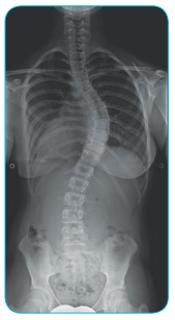Patient Resources

Understanding Pediatric Scoliosis
Pediatric scoliosis can be categorized into the following main types:
Early Onset Scoliosis (EOS)
EOS is a curvature of the spine diagnosed before the age of 10.
Adolescent Idiopathic Scoliosis (AIS)
AIS is the most common type of scoliosis and typically occurs between the ages of 10 and 18 years old. The term idiopathic means the cause is unknown.
Causes and Risks
Although the cause of scoliosis in some cases may be unknown, there is ongoing research into potential causes, including genetics, soft tissue disorders, and abnormalities in the central nervous system. Depending on the severity of the curve, heart and lung problems may occur that may worsen as the patient grows. Physicians will evaluate the risk of curve progression and recommend the appropriate treatment option.
Treatment options and resources for patients are available here. Download our Patient Brochure and dive into our FAQs to learn more.
Non-Surgical Treatment Options
Observation is appropriate for mild size curves that have a low risk of progression when the patient is still growing, or for moderate size curves when growth is complete.
Bracing is appropriate for moderate size curves in growing children to potentially prevent further progression of the curve while the spine continues to grow.
Casting is appropriate for mild size curves especially in younger children to help delay the progression of the curve. Casting may correct curvature in some cases, such as young children and those with smaller curves.
Surgical Treatment Options
The most common surgical treatment for curve correction, in which implants are used to fuse vertebrae.
A procedure that uses distraction-based implants to elongate the spine over time.
A procedure that uses compression-based implants to allow the spine to straighten as the patient grows.
A procedure that uses implants to passively guide the growth of the spine.
For National Scoliosis Awareness Month, Bridget of Curvy Girls Scoliosis Foundation spoke to us about what it was like to grow up with scoliosis. It’s important for patients to remember that they’re not alone. Bridget shares how Curvy Girls helped her through a difficult time.
